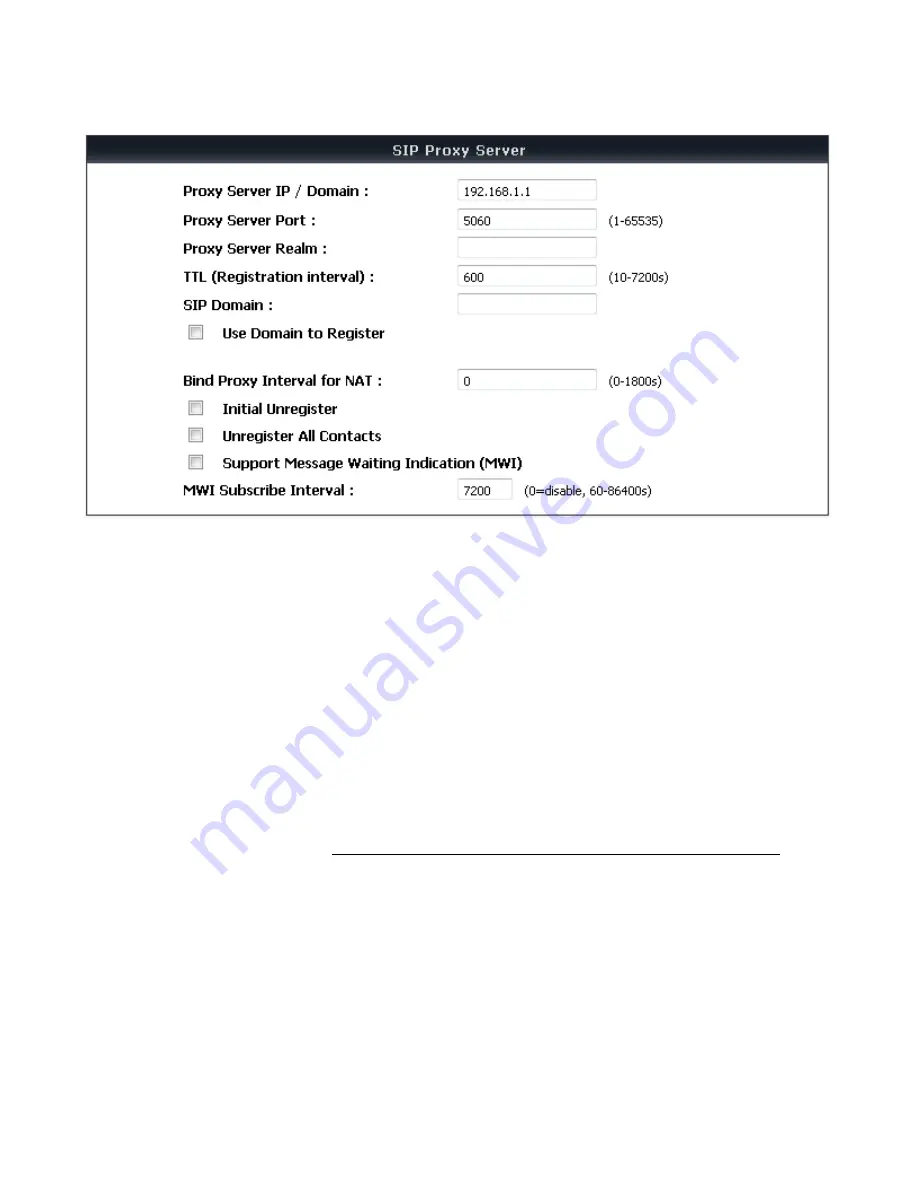
DVG-3032S/3016S User’s Manual
VoIP Gateway Configuration
D-Link Systems, Inc.
24
General Settings
→
SIP
Proxy Server IP/Domain:
Enter the IP address or URL (Uniform Resource Locator) of SIP proxy server or
soft switch.
Proxy Server Port:
Enter the SIP proxy server’s listening port for the SIP in this field. Leave this field to the
default if your VoIP Service Provider did not give you a server port number for SIP.
Proxy Server Realm:
Enter the realm for SIP proxy server. It is used for authentication in a SIP server. In
most cases, the VoIP Gateway can automatically detect your SIP server realm. So you can leave this
option blank. However, if your SIP server requires you to use a specific realm you can manually enter it in.
TTL (Registration interval) [10-7200 s]:
The interval for VoIP Gateway re-report to SoftSwitch.
SIP Domain:
Enter the SIP domain provided by your VoIP Service Provider. (Note some SIP proxy servers
might not require this.) If you enable “Uses Domain to Register”, the VoIP Gateway will register to the SIP
proxy server with the domain name you filled in. Otherwise, the VoIP Gateway will register to a SIP proxy
server with the IP it resolves.
Use Domain to Register:
Check the box to use Domain to register with SIP proxy server. The VoIP
Gateway is registered to the SIP proxy server with IP address if un-ticked.
Note: Proxy Server Realm
,
SIP Domain
and
Use Domain to Register
are the parameters provided
by VoIP Service Provider. If you fail to make a call, please contact your VoIP Service Provider.
Bind Proxy Interval for NAT:
Check the box to keep the binding exist by sending packets when the VoIP
Gateway is behind a NAT and SIP proxy server is not able to keep the binding.
Initial Unregister:
Check the box to send an unregistered message initially by the VoIP Gateway and then
it will perform a general register process.
Unregister All Contacts: DVG-3032S
sends un-register request to SoftSwitch which the contact field filled
with a start sign(*) to un-register all ports in this DVG-3032S..
Support Message Waiting Indication (MWI):
It is used to enable/disable Message Waiting Indication. It is
available only when Voice Mail Service is available from the VoIP Service Provider.
MWI Subscribe Interval:
It is used to set the subscribe time for the VoIP Gateway to check the voice mail.
















































